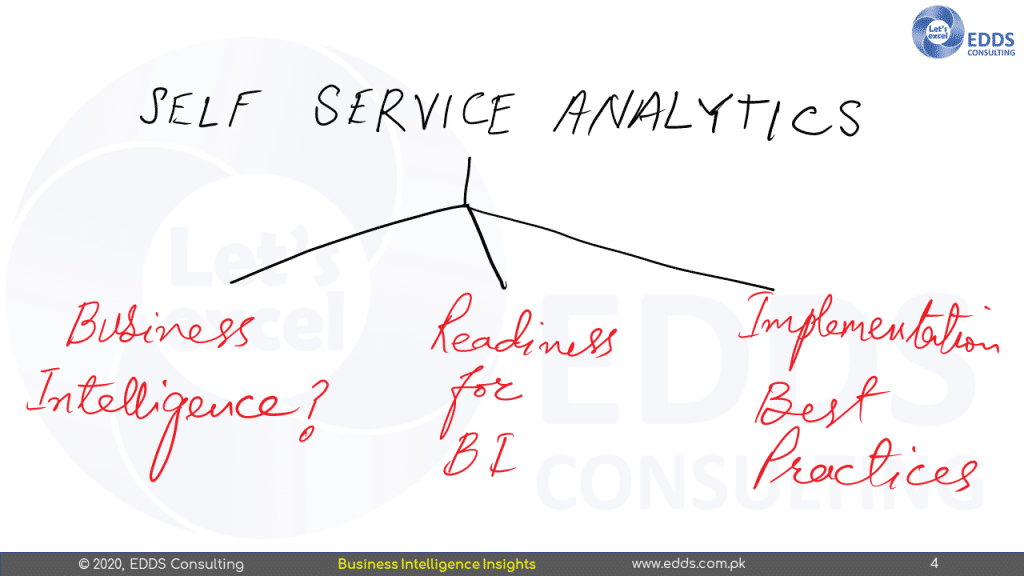When an enterprise introduces Power BI, it aims to create an environment where business users can conduct their own self-service analysis to create business intelligence. Knowing how to use Power BI is critical for the success of these types of business intelligence projects. But I suppose you already knew that, because you took out time to read this. Beyond knowing the tool (or tools that I explained in an Power BI tool chest Part 1 & Part 2), many other factors are also critical to the success of the BI project, such as the following:
- A common understanding of business intelligence and a definition of key performance indicators
- Organization’s readiness for a BI project
- Self-service BI project best practices knowledge

What is Business Intelligence?
Business intelligence is the provision of reliable, relevant information to the appropriate decision-makers within the timeframe necessary to facilitate successful decision-making.
Definition of BI
Better decision-making is the aim of a business intelligence project. By better, I mean decisions based on evidence. This could be long term strategic planning. It could be shorter-term tactical decisions. It could be up-to-the-minute scheduling . Perhaps the BI infrastructure of your company can be used for all of the above.
Defining KPIs
Based on this definition of business intelligence, one of the first criteria is to determine what information is going to be of value to the decision-makers. This is achieved by identifying key performance indicators (KPIs) for your organization. The KPI represents some critical aspect of the organization’s service. It shows the health of your company in a specific region.
Use the requirements in the following sections to ensure that your KPIs represent the overall health of your company.
Activity, Not Curiosity
As different values are suggested to serve as KPIs for your organisation, it is necessary to ensure that they are not included to just satisfy the interest of the decision-maker. The decision-maker should be able to identify the particular behavior that the company will take in response to variances in the KPI value. If values outside the defined normal range do not cause a response of any kind, this is not a true KPI for your organization.
Organization-Wide
A wide variety of KPIs should be chosen to cover all facets of the organization. The purpose is to build a holistic image. Financial KPIs are very significant. However, in order to have a full picture of the wellbeing of the company, all aspects of the organization must be reflected. KPIs should be identified for sales, order fulfillment, production, retention of customers, and so on.
Forward Looking
Plan your KPIs to be as forward-looking as possible. This allows you more time to respond when a number is out of the normal range. Last month’s sales figures may provide a key indicator of the health of the company, but it is too late in the process to allow time for any corrective action when that number dips. Instead, the KPI in the sales pipeline can provide a better number to answer to when making decisions.
Easily understood
KPIs should be readily understood by those who are using them. If the KPI is the product of a complicated formula, it can be difficult to understand exactly what the numeric says about the company. Defining what constitutes the standard range of the KPI may be troublesome. When KPI strays from the given normal range, it can be difficult to know what adjustments need to be made to get it back to where it should be. Whenever possible, use simplicity when describing KPIs to make it easier to understand and respond more clearly.
If a more complicated KPI is the only one that will suffice, be sure to provide documentation and training so that decision-makers can appreciate the KPI both now and in the future.

No Comments Yet